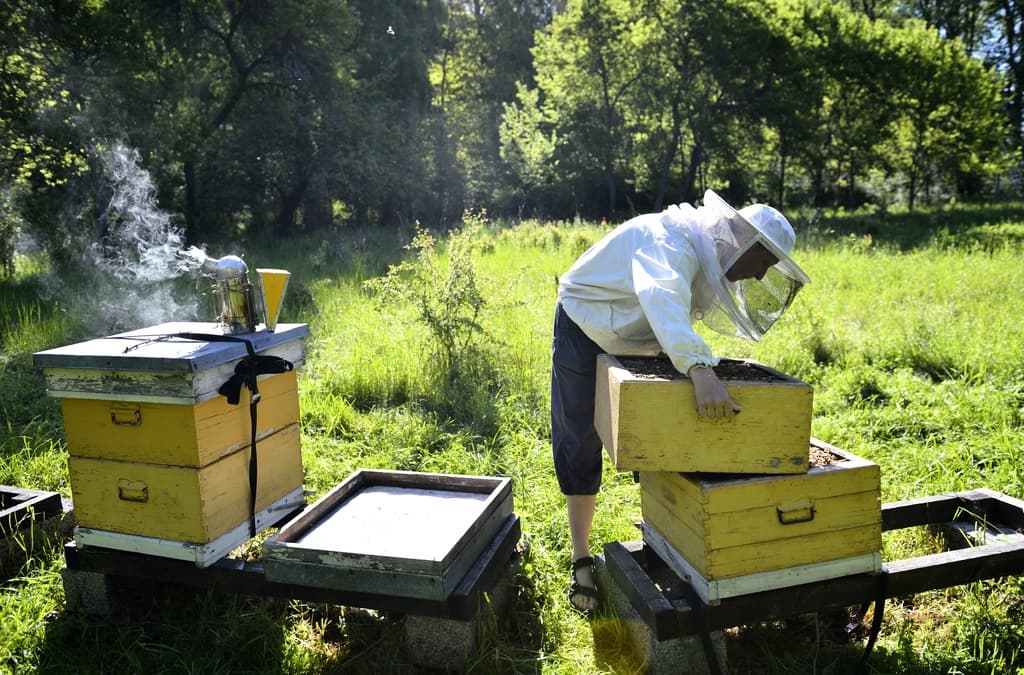It eats honey bees and causes concern among beekeepers. It is only a matter of time before the invasive velvet bee establishes itself in Sweden, according to experts.
The velvet bee poses a threat to bee colonies and biological diversity in Europe. Over the past 20 years, the species has established itself in most of Western Europe, including France and Germany.
According to the Environmental Protection Agency, the risk is high that the velvet bee will establish itself in Sweden.
At the initiative of the industry organisation Beekeepers, a working group has been set up with the task of planning measures and disseminating information about the velvet bee in collaboration with other authorities. Johanna Adolfsson is the coordinator and, according to her, the work can be crucial for Swedish beekeepers.
In France, the velvet bee is responsible for 20 per cent of all bee colony deaths, she says.
Southern Sweden in the risk zone
The invasive velvet bee can travel and establish itself in Sweden through transport, wind or its natural spread of between six to eight miles per year. The working group is also in contact with Denmark in case the bee travels there.
Due to a warmer climate in southern Sweden, it is most likely that the species will establish itself there.
But the velvet bee can also be transported with boats and vehicles to other harbours in Sweden, says Adolfsson.
It is the right conditions for mating and hibernation that are the key to its survival until next year.
Threat to honey
In the long run, an establishment would not only pose a threat to biological diversity but also to Swedish honey production. The velvet bee feeds on bees that produce honey.
A nest with velvet bees eats around eleven kilos of protein per season, which corresponds to around 100,000 insects, says Johanna Adolfsson.
The velvet bee stresses the bees and they dare not fly out. It hunts almost all day in front of the hive.
When the invasive species can establish itself in Sweden is unknown, according to Adolfsson. The most important thing for beekeepers is to keep themselves updated and informed.
Beekeepers need to educate themselves in the velvet bee's life cycle to know how to combat it.
The bee has a black thorax and on the abdomen, which is dark in colour, there is an orange band. The bee's legs and feet are yellow. The head is black, the antennae are dark, and the forehead of the bee is yellow-brown.
The queen can grow up to 30 millimetres and workers can grow up to 25 millimetres.
Source: Environmental Protection Agency





